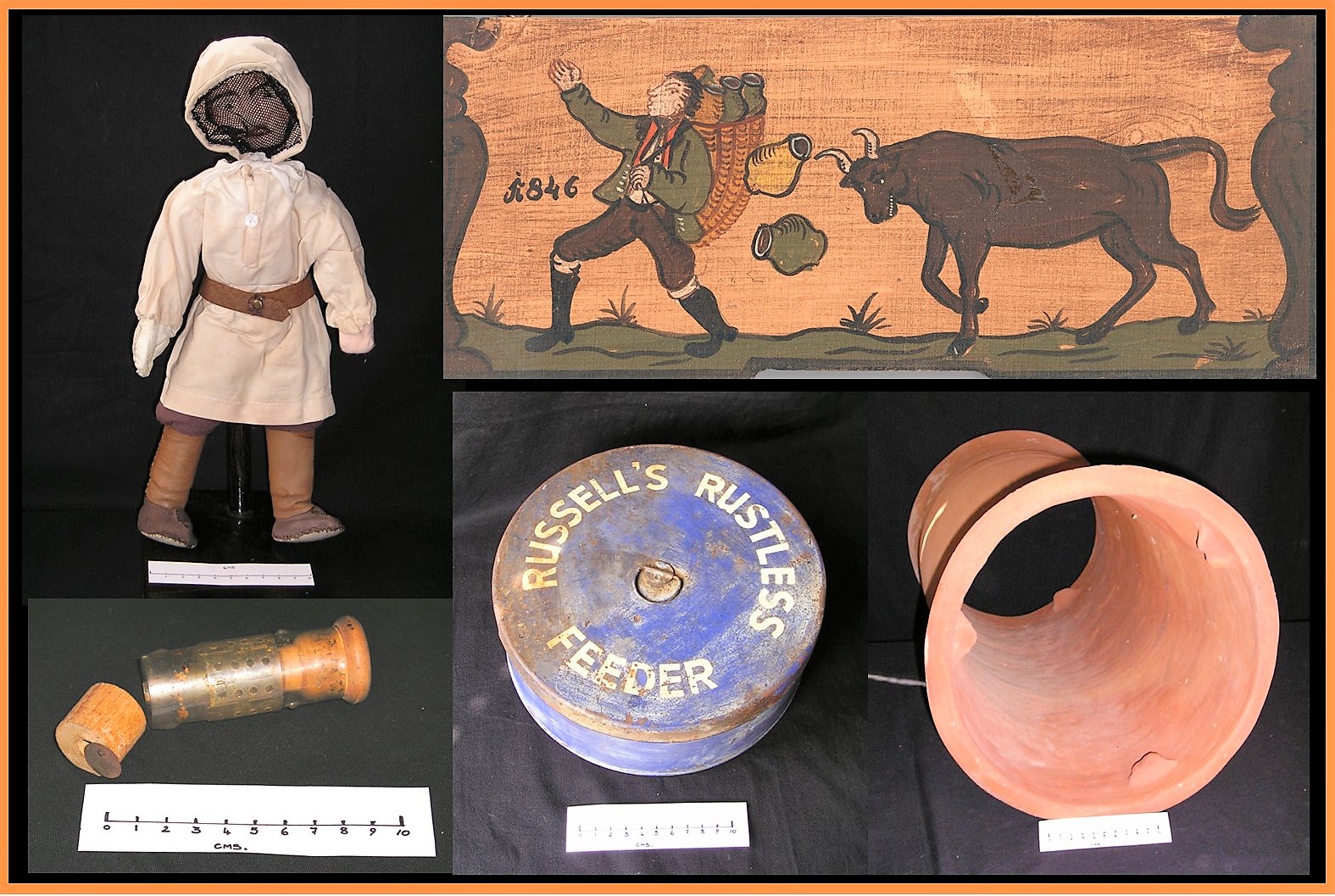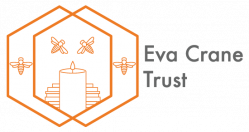The Historical Collection - how it all began.
The Historical Collection - how it all began.

A random selection of artefacts collected by or donated to Dr Eva Crane.
Clockwise from top left: Doll depicting a male beekeeper of the 1850's;
Slovenian hive front; Part of a clay hive from Cyprus;
An early 20th century feeder; Universal Perret-Maissoneuve Cage
Eva Crane was dedicated to collecting and recording every scrap of information she could find relating to bees and beekeeping. This dedication took her on journeys to over sixty countries, described in her book Making a Beeline (IBRA 2003). She visited bees, beekeepers and bee scientists and tried to record and disseminate the information she had garnered.
This search for knowledge did not stop at the spoken or written word. She collected artefacts related to the development of beekeeping in the countries she visited. In those, now far off, days before the necessary rigour of airport searches and security she brought a huge assortment of items back on her flights. These ranged from small innocuous items like coins depicting bees or queen cages to full size hives made from local materials sometimes covered over with mud or more often cow dung! As others learned of the collection, items of which formed articles in Bee World, new items were presented and started to fill the many rooms of her house in Gerrards Cross.
Every item was photographed and carefully recorded in a series of ledgers which gradually grew to ten volumes. A great many were used as illustrations in her books: The Archaeology of Beekeeping (Duckworth 1983), Bees and Beekeeping (Heinemann 1990), The World History of Beekeeping and Honey Hunting (Duckworth 1999).
In the past a small part of the collection was displayed at the Museum of English Rural Life at Reading University and sometimes small, themed displays were used at honey shows and conferences but for too long the wide-ranging pieces were just boxed and stored.
All the items in the Collection, should not be considered as a dead museum but as a stimulus and reference for further research and development and this is our joint aim with our colleagues in Ghent University.
Richard Jones, Chairman.
August 2022
